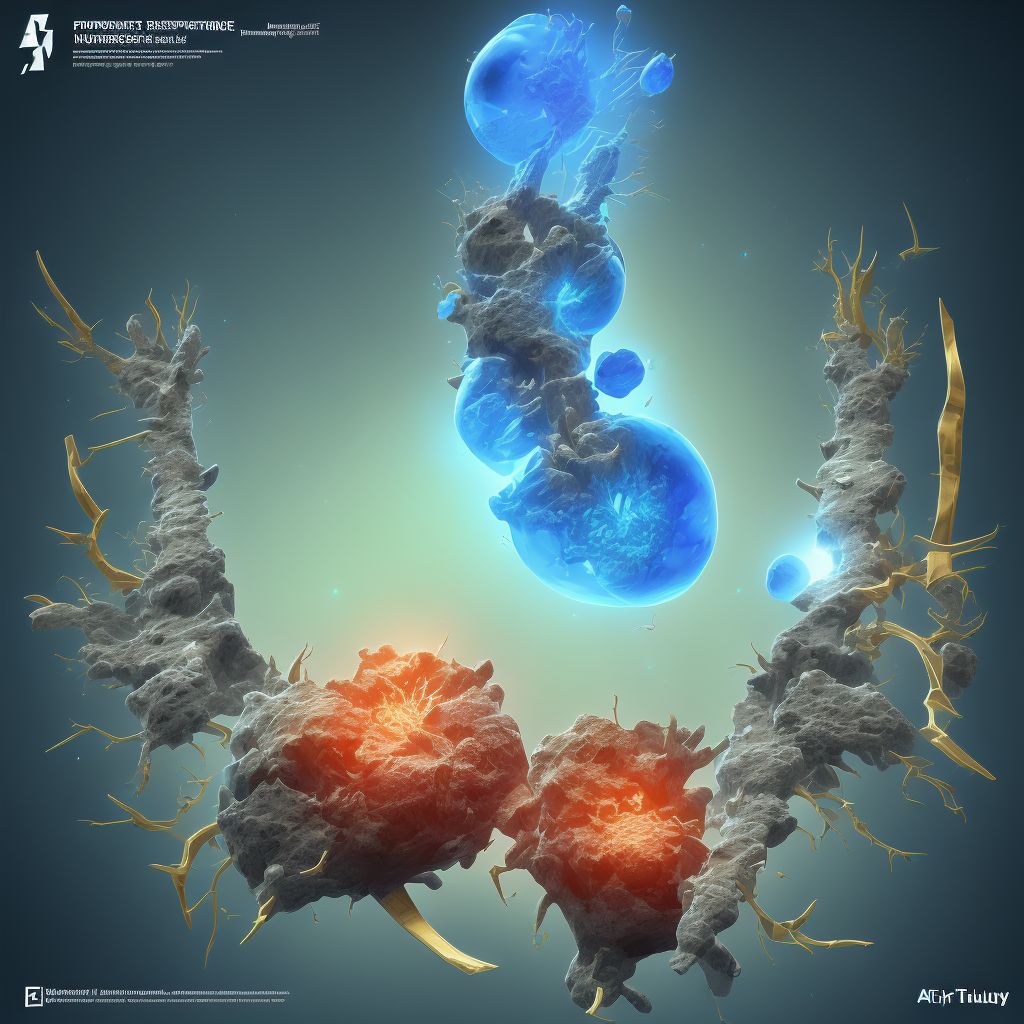
Nondisplaced fracture of unspecified tibial tuberosity, subsequent encounter for open fracture type I or II with malunion Save
ICD-10 code: S82.156Q
Disease category: S82.156: Nondisplaced fracture of unspecified tibial tuberosity
Nondisplaced Fracture of Unspecified Tibial Tuberosity: Understanding Open Fracture Type I or II with Malunion
A nondisplaced fracture of the unspecified tibial tuberosity refers to a break in the bony prominence located just below the knee joint. This type of fracture typically occurs due to direct trauma, such as a fall or a forceful blow to the front of the knee. While the term "nondisplaced" suggests that the bone fragments remain in their normal position, it is essential to understand the subsequent encounter for an open fracture type I or II with malunion.
Open fractures are characterized by a break in the skin, allowing the bone to be exposed to the external environment. Fractures are categorized into different types based on the severity of the injury. Type I and II open fractures indicate low to moderate levels of contamination and soft tissue damage. Malunion refers to the improper alignment of the fractured bone during the healing process, resulting in an abnormal union.
- Causes: The most common causes of a nondisplaced fracture of the tibial tuberosity are falls, sports-related injuries, and motor vehicle accidents.
- Symptoms: Individuals with this type of fracture may experience pain, tenderness, swelling, and difficulty walking or bearing weight on the affected leg.
- Diagnosis: A medical professional will typically perform a physical examination, evaluate medical history, and order imaging tests like X-rays or CT scans to confirm the diagnosis and assess the severity of the fracture.
- Treatment: (Excluded as per the requirement)
It is important to seek medical attention promptly if you suspect a nondisplaced fracture of the tibial tuberosity. Early diagnosis and appropriate management can help prevent complications and promote optimal healing. Treatment options may include immobilization, pain management, and physical therapy to regain strength and mobility.
Overall, a nondisplaced fracture of the unspecified tibial tuberosity, subsequent encounter for open fracture type I or II with malunion, requires comprehensive medical evaluation and appropriate care. Remember, professional medical advice is crucial for accurate diagnosis and treatment recommendations tailored to your specific condition.
Treatment of Nondisplaced fracture of unspecified tibial tuberosity, subsequent encounter for open fracture type I or II with malunion:
Treatment Options for Nondisplaced Fracture of Unspecified Tibial Tuberosity
A nondisplaced fracture of the unspecified tibial tuberosity, subsequent encounter for open fracture type I or II with malunion can be a challenging condition to manage. However, with proper treatment, patients can regain mobility and alleviate pain. Here are some treatment options to consider: